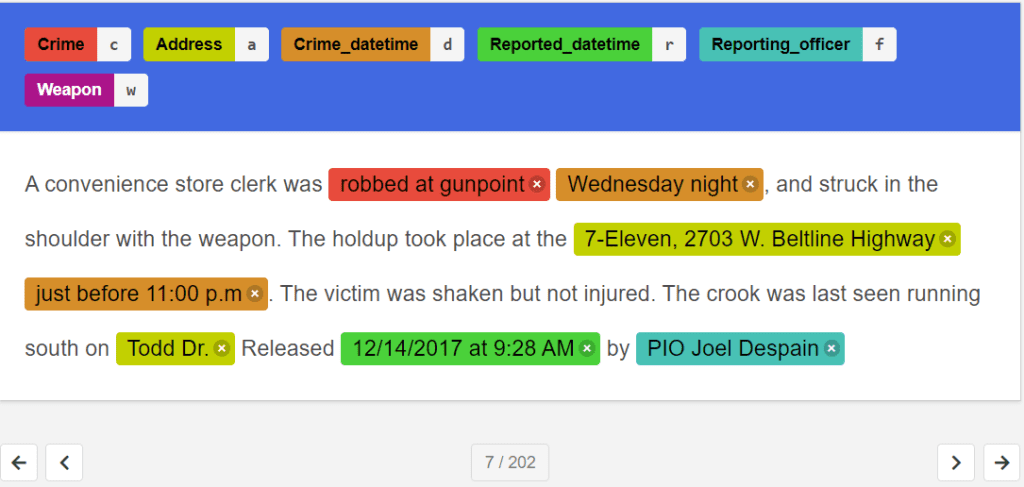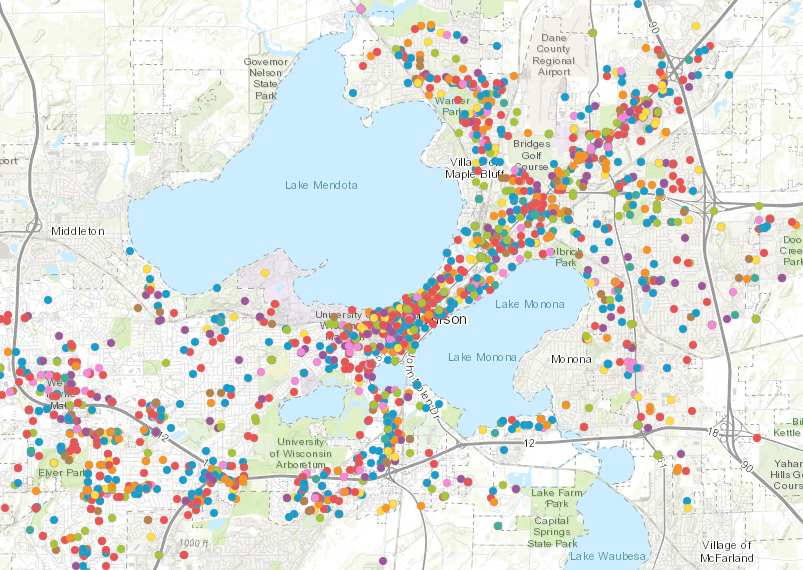
By Shahabuddin Amerudin
Named Entity Recognition (NER), an integral component of Natural Language Processing (NLP), plays a pivotal role in extracting meaningful information from unstructured text. This technique involves the identification and classification of specific entities within text, ranging from names of people and organizations to temporal expressions and geographic locations. The applications of NER are wide-ranging and impactful across diverse industries. In this comprehensive article, we will delve deeper into the mechanics of NER, explore its diverse applications, and focus on a specific use case: geospatial data extraction facilitated by the EntityRecognizer model.
The Mechanism Behind NER
At its core, NER operates through a two-step process. The initial step involves the identification of words or phrases in the text that represent entities, which can span categories like “Person,” “Organization,” “Time,” “Location,” and more. Following this, these identified entities are categorized into predefined classes, resulting in structured information extraction from seemingly chaotic text data. This process contributes to converting unstructured text into structured data that can be utilized for further analysis.
Diverse Applications of NER
The versatility of NER transcends industries, offering valuable insights and solutions. In the realm of finance, NER is employed to extract critical information about companies, stock market trends, and financial events from news articles and reports. In healthcare, NER aids in the identification of medical terms, diseases, and treatments, supporting research and patient care. Furthermore, NER finds application in social media sentiment analysis, legal document processing, and academic research, exemplifying its widespread impact.
Application in Geospatial Data Extraction
A notable application of NER lies in geospatial data extraction, a field where unstructured text often conceals valuable location-based insights. Traditional Geographic Information Systems (GIS) primarily rely on structured data, making the integration of unstructured text a challenge. The EntityRecognizer model, as part of arcgis.learn, disrupts this barrier by leveraging advancements in deep learning and NLP (Singh, 2020). This model transforms unstructured text, such as incident reports, into structured geospatial information like feature layers, enhancing spatial analysis capabilities.
Realising Geospatial Insights
Imagine a scenario where incident reports containing unstructured text describe crime occurrences. Extracting crucial geospatial details, such as the crime type, location, incident time, and reporting time, from these reports can be arduous. The fusion of NER and the EntityRecognizer model streamlines this process. By discerning relevant entities within the text, this approach yields actionable insights that can be organized into geospatial features. Consequently, spatial analysis becomes more efficient, empowering informed decision-making.

Unlocking New Possibilities
The amalgamation of NER and Deep Learning techniques for geospatial data extraction opens novel avenues for harnessing information locked within unstructured text. Organizations can swiftly process vast quantities of textual data, transforming them into actionable insights. These insights encompass various facets, including deciphering crime trends, identifying points of interest, and conducting sentiment analysis in specific geographic areas. NER’s application in geospatial analysis magnifies the scope of actionable intelligence derived from textual data.
Conclusion
Named Entity Recognition transcends its label as a mere NLP tool to stand as a dynamic force in information extraction. Its proficiency in autonomously identifying and classifying entities within text extends across industries, redefining data utilization. When synergized with Deep Learning, epitomized by the EntityRecognizer model within arcgis.learn, NER unveils its potential in geospatial data extraction. This integration empowers organizations to glean geospatial insights from seemingly inscrutable text, propelling spatial analysis and facilitating astute decision-making. As we traverse the ever-evolving landscape of NER and emergent technologies, the possibilities for innovative solutions in text analysis and geospatial intelligence continue to flourish.
Further Reading
- Named Entity Extraction Workflow with: https://developers.arcgis.com/python/guide/how-named-entity-recognition-works/
- Information extraction from Madison city crime incident reports using Deep Learning: https://developers.arcgis.com/python/samples/information-extraction-from-madison-city-crime-incident-reports-using-deep-learning/
Reference: Singh, R. (2020). Deep learning models in arcgis.learn. [Online] Available at: https://www.esri.com/arcgis-blog/products/api-python/analytics/deep-learning-models-in-arcgis-learn/ (Accessed: 19 August 2023).
Suggestion for Citation: Amerudin, S. (2023). The Dynamic Potential of Named Entity Recognition (NER) in Extracting and Analyzing Geospatial Data. [Online] Available at: https://people.utm.my/shahabuddin/?p=6699 (Accessed: 20 August 2023).

